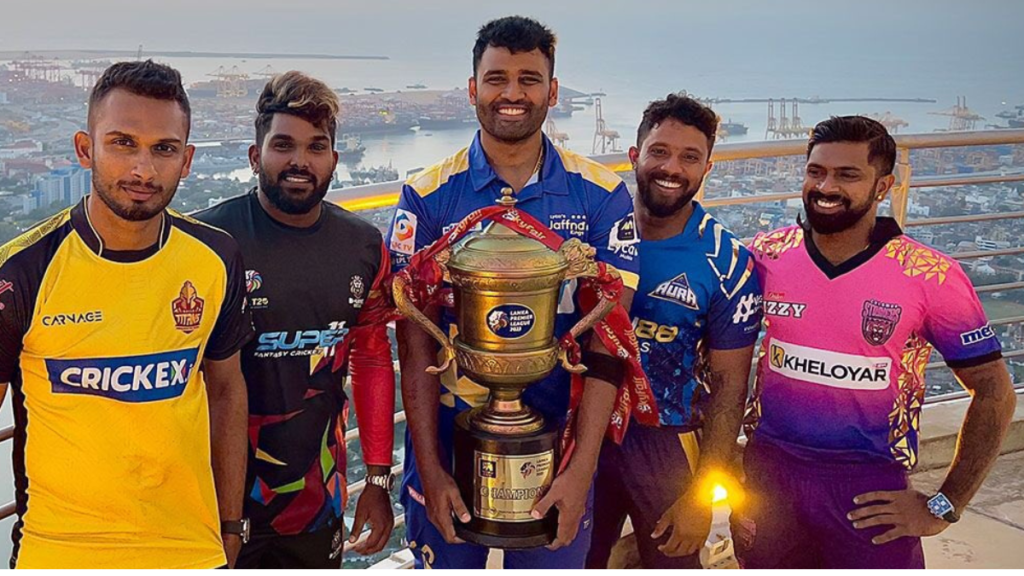On Thursday at the Lanka Premier League (LPL), the Colombo Strikers played a crucial match at their supposed home ground. They had previously beaten their opponents, the Kandy Falcons, twice in the league stage. The Strikers boasted players like Rahmanullah Gurbaz, Glenn Phillips, and Thisara Perera.
Tickets at Khettarama stadium were quite affordable. The cheapest were 200 rupees (slightly more than the cost of bread), decent seats were 600 rupees (like a fancy coffee), and the best seats were around 2000 rupees (like a fast-food meal). These prices covered not just the Strikers’ evening game but also the afternoon match between Galle Marvels and Jaffna Kings, who were fighting for a spot in the final.
In a thriving tournament, Khettarama would be packed with 35,000 fans, and social media would be buzzing with discussions. Sponsors would be eager to get involved.
However, reality was different. Only a few spectators showed up, the Falcons played without a sponsor, and although die-hard fans watched, the matches didn’t capture mainstream attention. Even on Saturday, when the Kings played the Falcons in an exciting match, the crowd and interest were only slightly better.
The Lanka Premier League started during the COVID lockdown in 2020 with a bit of a spark. People stuck at home tuned in, and with little other cricket happening globally, international fans watched too. Playing at a single bio-secure venue helped, even though it was costly to maintain.

ALSO READ: Former India Batting Coach Likely To Replace VVS Laxman As NCA Head
When the Jaffna franchise, originally called Stallions, won, it felt like the LPL had potential. Many in Jaffna and the diaspora connected with the team. But by the next edition, the winning Stallions team was terminated by Sri Lanka Cricket, disappointing their owners. No serious efforts were made to build a fanbase in their home cities.
Since then, the LPL has struggled, with new owners each season. For example, the Dambulla franchise changed names and owners multiple times, from Dambulla Viiking to Dambulla Giants, then Dambulla Aura, and now Dambulla Sixers, due to various issues with the owners.
Seeing so many companies buy and quickly ditch these franchises, while stadiums remain largely empty, raises the question: who is this tournament for?
Organizers boast about TV viewership each year. But if that’s true, why do franchise owners keep changing? Last year’s winners, B-Love Kandy, don’t even have their original owners anymore, and the organizers had to run the franchise.
Interestingly, Sri Lanka Cricket (SLC) isn’t running the LPL. It’s managed by the Innovative Production Group (IPG), which mainly handles cricket broadcasts.
SLC and IPG face economic challenges. Sri Lanka’s market is small, with a population of 22 million, similar to Mumbai. While they managed the challenges of the COVID lockdown, they didn’t expect Sri Lanka’s economic downturn in 2021 and 2022. With less money in the country, fans are hesitant to spend, and companies are cautious with marketing budgets.
But even considering these issues, the LPL is struggling. One major problem is that SLC hasn’t tried to spread cricket to the provinces. Players from Jaffna, Dambulla, or Kandy have to move to Colombo for senior cricket. This means fans in those cities can’t support local players, unlike fans in leagues like the Big Bash, Caribbean Premier League, or Pakistan Super League.
While organizers may claim some growth, the LPL is lagging behind other leagues. The Major League Cricket in the USA, running at the same time, attracted big names like Pat Cummins, Rashid Khan, and Glenn Maxwell, which the LPL has never managed.
This situation reflects the state of men’s cricket in Sri Lanka. SLC officials claim progress, but in reality, Sri Lanka is falling behind.

